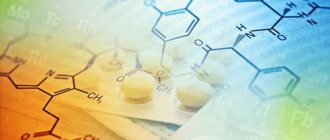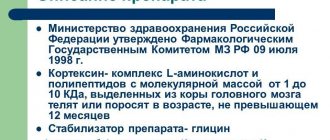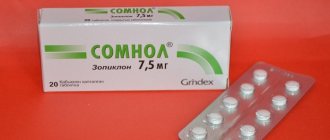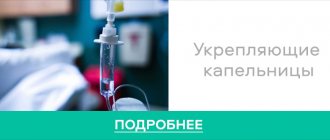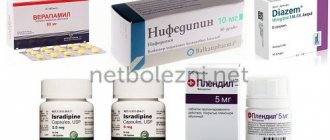Antiepileptic drugs are medications used for epilepsy to prevent or treat epileptic seizures. In addition, these drugs are used to prevent or treat seizures that occur due to other diseases. Therefore, they are also called anticonvulsants.
Epilepsy is a common chronic disease of the nervous system, which usually manifests itself as repeated seizures - convulsions. Epileptic seizures are generalized (spread to both hemispheres of the brain) and partial (occur in a strictly defined area of the brain).
The development of seizures is preceded by an aura - nausea, weakness, dizziness, speech impairment, numbness of the lips, tongue, loss of consciousness. Next, convulsions occur directly: tonic (the body and limbs are stretched in a state of tension, the jaws are clenched, and breathing is held) and clonic (contraction of the muscles of the limbs, neck, and torso).
Sometimes convulsions are manifested by individual muscle twitching without loss of consciousness (myoclonus), sudden short-term freezing, lack of reaction (absence).
Epilepsy usually occurs in childhood and most often the cause cannot be determined. Heredity, intrauterine oxygen deprivation of the fetus during pregnancy, and birth injuries play a certain role in the development of epilepsy.
Seizures can also be a symptom of other diseases or conditions that occur at any age. Thus, seizures can occur with head injuries, hemorrhage in the brain, intracranial tumors, pregnancy, oxygen starvation, metabolic disorders, overdose of substances that affect the nervous system (including alcohol).
Indications for use
All antiepileptic drugs are used to treat epilepsy, as well as symptomatic seizures in other diseases of the nervous system.
Certain drugs (carbamazepine, gabapentin, pregabalin) are also used to treat neuralgia and neurogenic pain (associated with nerve damage).
Lamotrigine, carbamazepine, oxcarbazepine, and valproic acid are additionally used to normalize mood in patients with bipolar affective disorder, which is characterized by alternating periods of manic agitation and depression.
Traditional and new anticonvulsants in epileptology
Currently, the “gold standard” for assessing the effectiveness and tolerability of antiepileptic drugs (AEDs) is double-blind, placebo-controlled studies. However, these studies are not without a number of shortcomings, the main one being the limited duration of the study compared to the long-term, in many cases lifelong, course of epilepsy. It is known that a drug that was previously effective can be replaced with another due to the development of tolerance to it [1] or the appearance of intolerable or unacceptable side effects for the patient. A decrease in the effectiveness of AEDs may also be associated with the evolution of the disease itself, for example, medial temporal lobe epilepsy, but even so, doctors, as a rule, increase the doses of AEDs, replace the drug with another, or add another one.
An indicator for assessing the success of long-term use of AEDs is the retention rate on the drug (% of patients continuing treatment after a certain period of time, usually 6 or 12 months from the start of the study). The retention rate of a drug is an integrated indicator that reflects, on the one hand, its tolerability, and on the other, the development of tolerance to it.
Our review reflects the results of long-term (6 months or more) studies on both traditional (valproate, carbamazepine) and new (lamotrigine, topiramate, levetiracetam, oxcarbazepine) AEDs.
Valproate and carbamazepine. Valproate (valproic acid salt) (Depakine® and carbamazepine (Tegretol®, Finlepsin®) are traditional AEDs and are considered the “gold standard” for the treatment of epilepsy [2]. Both drugs have been used for the treatment of epilepsy since the 60s of the 20th century. Valproate - A broad-spectrum drug, carbamazepine is used primarily for symptomatic and presumably focal epilepsies, it is contraindicated in most idiopathic generalized epilepsies.In the United States, phenytoin is added to the use of carbamazepine and valproate.A number of studies have been conducted over the years regarding the effectiveness and tolerability of these drugs.
A study conducted by M. Kuncikova et al. [3] showed high efficacy and good tolerability of sodium valproate in the treatment of partial epilepsy in children and adults. The remission rate reached 84% in children and 73% in adults, while a high level of retention on the drug was noted (90% after 6 months of treatment). Only 2% of patients discontinued the study due to side effects.
A multicenter comparative study of the effectiveness of sodium valproate and carbamazepine (EPITEG group) in the treatment of adults [4] and children [5] was conducted in the UK.
The EPITEG study in adults included patients with newly diagnosed epilepsy with primary generalized, partial or secondary generalized seizures. Patients were divided into groups: those receiving sodium valproate (200 mg 2 times, n = 149) and those receiving carbamazepine (100 mg 2 times, n = 151). If necessary, the dose was increased either until the attacks stopped or until toxic effects appeared.
Sodium valproate and carbamazepine showed equal efficacy, however, after 6 months, significantly more patients remained in the group treated with valproate than in the other (90% vs. 75%, p = 0.001). Discontinuation due to side effects was more common with carbamazepine than with valproate (15% versus 5% in the first 6 months of therapy). By the end of the three-year follow-up period, over 70% of study patients either remained on prescribed therapy or stopped taking the drug after achieving long-term remission. Overall, the study showed good tolerability of traditional AEDs in the treatment of epilepsy in adults.
The EPITEG study on the use of PER in pediatric practice included 260 children with newly diagnosed primary generalized or partial epilepsy who had two or more generalized tonic-clonic or partial seizures in the previous 6 months. The children were divided into two groups: one took sodium valproate (n = 130), the other took carbamazepine (n = 130). Both were observed on an outpatient basis for 3 years. If necessary, the AED dose was increased either until the attacks stopped or until toxic effects appeared. Both drugs showed equivalent effectiveness, side effects were minor and rarely required discontinuation.
The comparative effectiveness of monotherapy with phenobarbital, phenytoin, carbamazepine and sodium valproate for newly diagnosed epilepsy in children was studied by M. de Silva et al [6]. The open-label, randomized study included 167 children aged 3 to 16 years who had suffered at least two partial or generalized tonic-clonic seizures. The children were divided into groups depending on the prescribed drug - one of four AEDs. The study protocol was close to routine clinical practice. Efficacy was assessed by the time to the first attack after the start of therapy and the time to achieve one-year remission. The results of all four drugs were favorable. During 3 years of observation, annual remission was achieved in 73% of children. There were no significant differences in effectiveness between the drugs. The highest level of side effects requiring discontinuation of use was noted with the use of phenobarbital (6 of the first 10 patients in the group receiving this drug), and therefore phenobarbital was not prescribed in the future. Among the remaining three AEDs, phenytoin was discontinued more often (9%) than carbamazepine or valproate (4% each).
A comparative study of similar design was conducted by AJ Heller et al [7] for newly diagnosed epilepsy in adults. 243 patients aged 16 years or older with at least two partial or generalized tonic-clonic seizures were assigned to receive phenobarbital, phenytoin, carbamazepine, and sodium valproate. 75% of patients achieved one-year remission during the three-year follow-up period. The drugs demonstrated equivalent efficacy but differed in tolerability. Discontinuation of therapy due to side effects was necessary in a total of 10% of patients, while in the group of patients taking phenobarbital this proportion was 22%, and in the group of patients taking phenytoin, carbamazepine and valproate - 3, 11 and 5%, respectively. The authors believe that toxicity and cost should be considered when choosing a drug.
New anticonvulsants. In Russia, five new AEDs are currently registered and sold in pharmacies. Three of them: lamotrigine (Lamictal®), levetiracetam (Keppra®), topiramate (Topamax®), are broad-spectrum drugs. Oxcarbazepine (Trileptal®) and gabapentin (Neurontin®) are indicated for the treatment of symptomatic and suspected symptomatic focal epilepsies. Although some data suggest that the new AEDs are similar in efficacy to traditional AEDs but are better tolerated, research and clinical practice indicate that they differ markedly in both efficacy and retention. Thus, gabapentin turned out to be a drug with low antiepileptic activity and is registered for the treatment of neuropathic pain; lamotrigine combines relatively low efficacy with good tolerability; Topiramate combines high efficacy with a relatively low retention rate.
A number of studies have been conducted to assess the effectiveness and tolerability of new AEDs: open prospective and retrospective studies of new drugs, comparative studies, meta-analyses (reviews based on mathematical processing of the results of double-blind, placebo-controlled studies of compared AEDs).
In a study by HP Bootsma et al [8] examining the efficacy of topiramate, retention rates were 53% at 1 year, 45% at 2 years, 38% at 3 years, and 30% at 4 years. Thus, after 4 years, 70% of patients stopped taking topiramate, in 65% of cases this was due to side effects of the drug.
K. Yu. Mukhin et al [9] used topiramate as an additional therapy in 45 patients with various forms of epilepsy. A positive effect was achieved in 69% of cases, but in 19% of cases, after 1–3 months, the frequency of attacks reached the previous level. Discontinuation of the drug due to side effects was necessary in 11% of cases.
A study of the effectiveness and tolerability of levetiracetam in children and adolescents with refractory epilepsy was carried out by S. von Stuelpnagel et al. [10]. The study included 129 patients with an average age of 10.6 years, suffering from severe epilepsy, often with mental retardation. Patients received levetiracetam at a mean dose of 39.8 mg/kg per day (6–70 mg/kg). The treatment gave results in 35 patients (27.1%), of which 5 had seizures that stopped. The drug retention rate among patients with successful treatment after 3 years was 22.5%.
A retrospective multicenter study of the effectiveness, tolerability and retention of levetiracetam therapy was conducted by D. Peake et al [11]. The study included 200 children from 0.3 to 19 years old with refractory epilepsy. The dose of levetiracetam varied from 8 to 100 mg/kg per day (mean 39 mg/kg). The drug was well tolerated. The retention rate on the drug 1 year after the start of the study was 49%. At 2, 6, and 12 months, a reduction in seizures of more than 50% was observed in 60, 40, and 32%, respectively, including freedom from seizures in 14, 14, and 5% of patients, respectively. The authors assess the levels of treatment effectiveness and retention on the drug in this group of children with intractable epilepsy as good.
A British study by RJ Simister et al [12] compared retention rates on several new AEDs in adult patients with chronic epilepsy and mental retardation. At 2 years after treatment initiation, retention rates were 85% for oxcarbazepine, 57% for lamotrigine, 56% for levetiracetam, and 45% for topiramate. For tiagabine and gabapentin, this level was 24 and 15%, respectively. The highest incidence of side effects was recorded with topiramate (60%), the lowest with levetiracetam (16%).
S. Chung et al [13] studied retention rates on five new AEDs: levetiracetam, lamotrigine, oxcarbamazepine, topiramate and zonisamide. Assessments were carried out at weeks 4, 12, 24, 52 and 104. A total of 828 AED prescriptions were analyzed. Retention rates were highest for lamotrigine (74.1%), followed by zonisamide (60.2%), oxcarbazepine (58.8%), levetiracetam (53.6%), and topiramate (44.2%). Drug discontinuation was most often associated with ineffectiveness (29.5%) and sedative side effects (20.5%). As a rule, the drug was discontinued in the first 6 months of therapy. Some reasons for discontinuation were specific to specific AEDs: behavioral disturbances and excitability with levetiracetam; rash due to carbamazepine and lamotrigine; oxcarbazepine caused hyponatremia; Topiramate and zonisamide were discontinued due to kidney stones.
Meta-analysis allows for indirect comparison of the effectiveness and tolerability of drugs. The results of one of the meta-analyses [14] are presented in the figure. The response level (on the vertical axis) reflects the effectiveness of the drug (the higher, the more effective), the withdrawal level (on the horizontal axis) reflects tolerability (the closer to zero, the less often the drug is discontinued).
For most new AEDs, with the exception of levetiracetam, a pattern can be traced: the more effective the drug, the lower the retention rate.
Comparison of traditional and new anticonvulsants. The efficacy and tolerability of valproate, lamotrigine and topiramate in patients with generalized or unclassifiable seizures was studied in the UK open-label, randomized, controlled SANAD trial [15]. The study included 716 patients for whom valproate was considered standard therapy. Patients were divided into groups depending on the drug used: valproate, topiramate and lamotrigine. The primary outcomes were time to therapeutic failure and time to 1-year remission. The study showed superiority of valproate over topiramate in tolerability and over lamotrigine in effectiveness. Retention rates on the drug during an observation period of up to 6 years are presented in the table.
As can be seen from the table, valproate demonstrated more favorable and stable retention rates on the drug compared to lamotrigine and topiramate.
The main goal of antiepileptic therapy is to achieve stable remission with acceptable tolerability of AEDs. However, this goal is not always achievable. M. Brodie (2005) observed 780 patients (Glasgow) with newly diagnosed epilepsy for 20 years [16]. Of these, 56.1% achieved remission when using the first or second AED (regardless of the drug), 8.5% had a positive result at the beginning of therapy, but subsequently developed resistance, 3.4% of patients were resistant from the very beginning. onset of the disease. Patients of the first group are able to achieve remission when taking low and medium doses of the appropriate AED, and their tolerability, and therefore the level of retention on the drug, is good. However, according to JH French [17], in the group of resistant patients, higher doses of drugs are used to achieve results. For all new AEDs, with the possible exception of levetiracetam, there is an association between dose and discontinuation rate, which is supported by the results of other meta-analyses [14].
It can be concluded that in the group of traditional AEDs, sodium valproate has the best retention rates on the drug. As for new AEDs, this figure is higher for lamotrigine and levetiracetam. There is currently no convincing evidence of the superiority of new AEDs over traditional ones in terms of retention on the drug. When choosing an AED, in addition to the traditional indications for use, the level of retention on the drug should also be taken into account as one of the predictors of its successful use without replacement during the long-term treatment of epilepsy.
For questions regarding literature, please contact the editor.
A. Yu. Ermakov , Candidate of Medical Sciences S. R. Boldyreva Moscow Research Institute of Pediatrics and Pediatric Surgery of the Russian Health Service, Moscow Children's Hospital No. 1, St. Petersburg
pharmachologic effect
Convulsions occur when the balance between excitation and inhibition in the brain is disturbed in the direction of excitation. Mediators (signal transmitters between neurons) are responsible for this balance:
- inhibitory – gamma-aminobutyric acid (GABA), glycine;
- stimulating – amino acids glutamate, aspartate.
In addition, sodium and calcium channels of neurons play a huge role in the generalization (spread) of excitation. Antiepileptic drugs affect one or more mechanisms maintaining the balance of excitation and inhibition in the brain.
Classification of antiepileptic drugs
There are several classifications of antiepileptic drugs: according to the characteristics of use in different forms of epilepsy - types of paroxysms, according to the mechanism of action, as well as the chemical structure of the drugs.
According to the mechanism of action, the following groups of antiepileptic drugs are distinguished:
Sodium channel blockers
- Hydantoin derivatives (phenytoin)
- Carboxamide derivatives (carbamazepine, oxcarbazepine, eslicarbazepine acetate)
- Others (lamotrigine, lacosamide)
Calcium channel blockers
- Succinimide derivatives (ethosuximide)
- Others (pregabalin)
Agents that enhance the inhibitory effects of GABA
- Barbiturates (phenobarbital, benzobarbital)
- Benzodiazepines (diazepam, clonazepam, lorazepam)
- Others (vigabatrin, gabapentin, tiagabine)
Agents that inhibit the action of excitatory amino acids
- Felbamate
Combination agents
- Fatty acid derivatives (valproic acid and its salts - valproates)
- Others (topiramate)
According to the characteristics of their use in different forms of epilepsy, antiepileptic drugs are divided into:
- Drugs used for partial seizures: valproate, carbamazepine, lamotrigine, vigabatrin, gabapentin, phenobarbital, clonazepam, phenytoin.
- Drugs used for generalized seizures:
- for grand mal seizures - valproate, carbamazepine, phenobarbital, phenytoin, lamotrigine;
- for small convulsive seizures (absences) - ethosuximide, valproate.
In addition to the drugs listed in the classification, seizures can be eliminated or prevented by magnesium preparations (magnesium sulfate) when administered intravenously, anesthetics (sodium hydroxybutyrate, sodium thiopental).
Approaches to taking anticonvulsants
If previously the main goal of treating epilepsy and taking anticonvulsants was to prevent new seizures, today an integrated approach takes first place, taking into account the patient’s quality of life and maintaining his ability to work during treatment
Finding effective therapy can be difficult. This is influenced by factors such as compliance with medication regimen and side effects. Changing drugs by trade name, but with the same active ingredient, can also lead to worsening problems.
Typically, one drug is used at the beginning of treatment for epilepsy, but the dosage and medication may vary. If the desired result is not achieved, only then connect a second remedy and use various combinations.
Finding effective therapy can sometimes be difficult.
Anticonvulsants
There are 3 main mechanisms used to treat epilepsy:
- Stabilization of the membrane potential of nerve cells due to the influence on ion channels. Due to this, K+ ions remain in the cell, and Na+ ions outside. The effect can also be exerted through Ca2+ channels. This maintains “rest” on the membrane of nerve cells.
- Suppression of processes involved in excitation.
- Strengthening braking mechanisms.
Many drugs act on several mechanisms at once and it will not be possible to divide them into groups on this basis.
Medicines:
Depakine Chronosphere , Convulex , Encorat chrono . Valproic acid preparations. They have a muscle relaxant effect and enhance inhibitory processes in the brain. Absorption of the drug may slow down when taken with food. Side effects include : weight gain, hair loss, gastrointestinal problems, tremors.
Finlepsin retard , Tegretol CR , Carbatol. They belong to carbamazepine drugs and are used for grand mal seizures and mixed forms of epilepsy. Contraindications: absence and myoclonic seizures. Side effects: dizziness, drowsiness, headache, but stopping treatment often causes a skin rash.
Phenobarbital , Benzonal , Maysolin . They belong to the group of barbiturates. Can be used for any type of epilepsy attack. Often used in infants. There is a marked slowdown in mental processes. Children have the opposite reaction and develop hyperreactivity. They reduce motor activity and can cause drowsiness. The anticonvulsant effect is realized by preventing the occurrence and propagation of an impulse from the source of activity. The absence form of idiopathic epilepsy will be a contraindication for use.
Frisium , Relanium , Merlit. They belong to the group of benzodiazepines. They are especially often used for progressive myoclonic epilepsy. But over time, the effect may decrease and addiction may develop .
Lamictal , Pamolen. The active ingredient is lamotrigine. It is effective for all types of seizures, but it is recommended to avoid it for myoclonus. The main side effect is a rash, the severity of which increases sharply when combined with valproate and carbamazepine.
Topamax (topiramate). Acts on different mechanisms in preventing attacks, effective in adults and children. Start taking with minimal doses and increase slowly. Use with caution in children with speech disorders, as well as sleep problems. One of the side effects is weight loss, so it should not be used in “thin” patients.
Keppra , Levetinol . The active ingredient is levetiracetam. Optimal action for epileptic myoclonus, does not interact with other drugs. Should not be used in patients prone to agitation and sleep disturbances.
Suxilep. Previously it was the drug of choice for the treatment of absence seizures, but has now given way to valproic acid. Contraindicated for mental problems. Side effects: headache, drowsiness, gastrointestinal symptoms.
Tebantin , Neurontin , Gabapentin . Structurally similar to GABA, they are not transformed in the liver, so they can be used with many other drugs and for liver diseases. Side effects: weakness, dizziness, weight gain.
Since the treatment of epilepsy in many cases involves lifelong use of drugs, the balance between their effectiveness and toxicity is important. Drug metabolism pathways (in the liver) and interactions with other drugs in concomitant diseases also play a role. The selection of anticonvulsant drug therapy is a joint effort between the doctor and the patient.
Epilepsy Treatment Basics
Antiepileptic drugs are prescribed only by a specialized specialist - a neurologist or psychiatrist - after a complete neurological examination of the patient. In this case, the type of epileptic seizures must be taken into account.
Antiepileptic drugs are usually prescribed after the second attack. The earlier treatment begins, the better and easier it is to control seizures.
Therapy is usually started with one drug (monotherapy). The effectiveness of treatment is assessed over 3 months. Ideally, the drug completely prevents seizures. In case of ineffectiveness, the drug is changed or a combination of two (less often three) drugs is used.
Epilepsy
Epileptic seizures that occur without any apparent reason two or more times can be considered epilepsy. An epileptic seizure is an abnormal or excessive discharge of neurons in the brain with visible manifestations. Visible manifestations are not always convulsions and loss of consciousness, they can be:
- only changes in consciousness;
- mental manifestations;
- motor changes;
- vegetative manifestations.
For a particular person, these symptoms can be in the form of ringing in the ears, flashes of light or flame, redness of the face, short-term disturbances in speech, memory and many others. It depends on where the nerve impulse went out of control and activated a particular area of the brain. Moreover, these changes may be first noticed by another person, and not by the patient himself. This can happen, for example, with episodes of freezing for a few seconds. If these symptoms have a clear cause, such as a head injury or a brain tumor, it is not epilepsy.
There are many forms of epilepsy depending on the type of epileptic seizures, types of epilepsy and status epilepticus (an epileptic seizure lasting more than 30 minutes at once or a series of seizures without full recovery of consciousness).
If the symptoms have a clear cause, then it is not epilepsy.
Features of epilepsy treatment
Epilepsy is a chronic disease that requires long-term, often lifelong, treatment. If epilepsy is not treated, the patient experiences behavioral disturbances, emotional disorders, and memory loss (epileptic dementia).
During treatment, patients are recommended to adhere to a normal sleep and rest schedule, a special diet high in fat and low in proteins and carbohydrates (ketogenic diet), and exclude alcohol, coffee, energy drinks and tobacco products from the diet.

